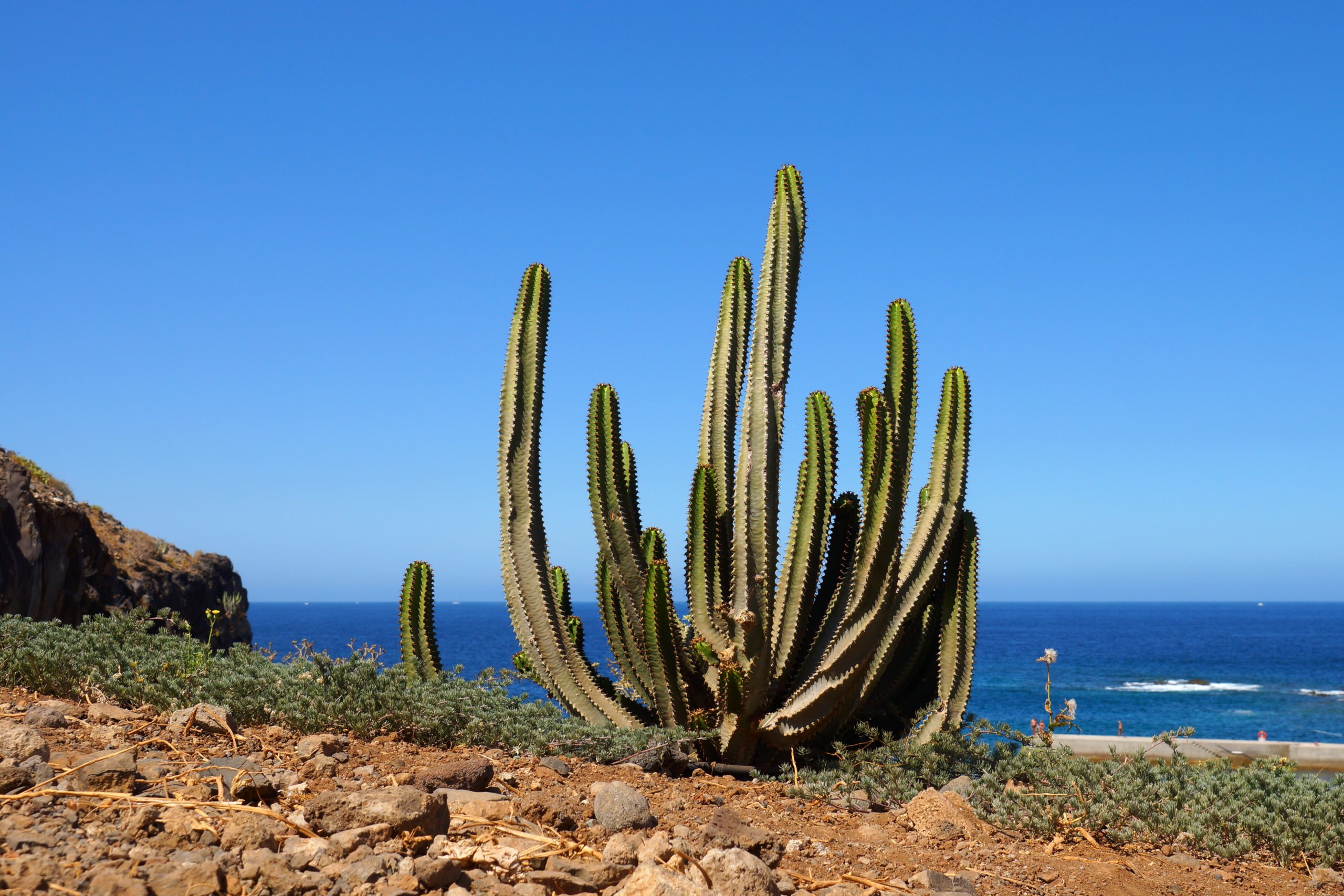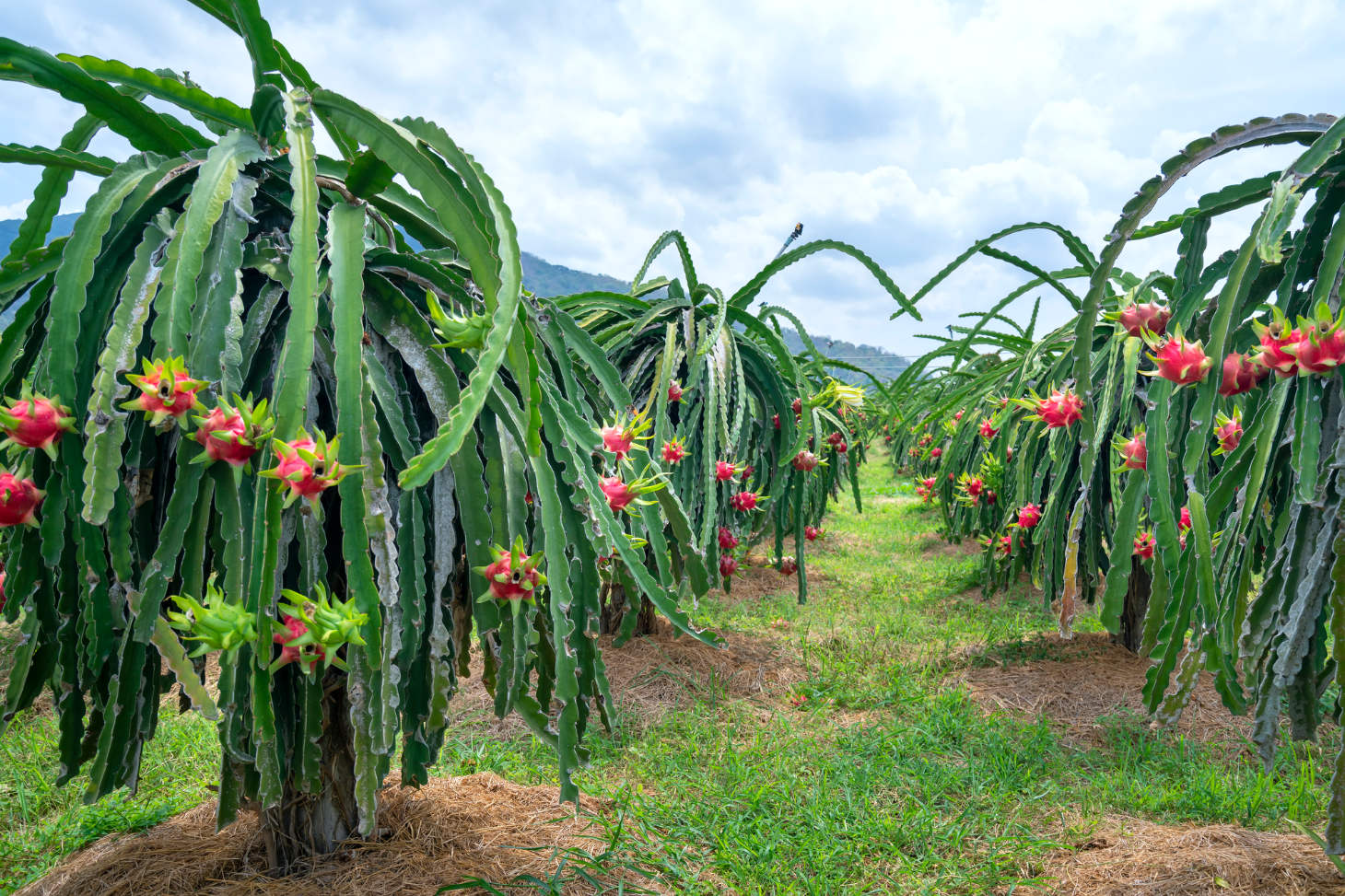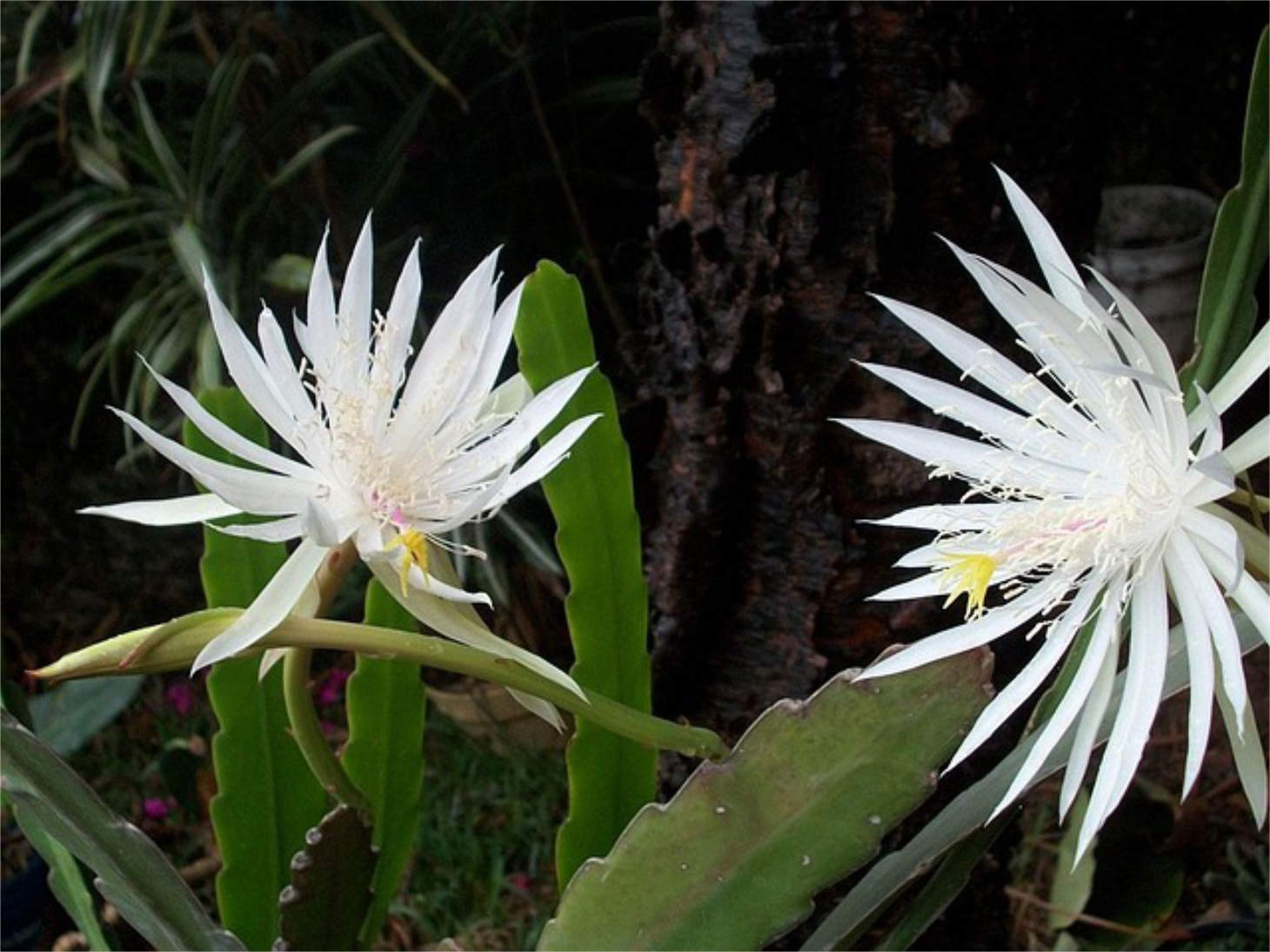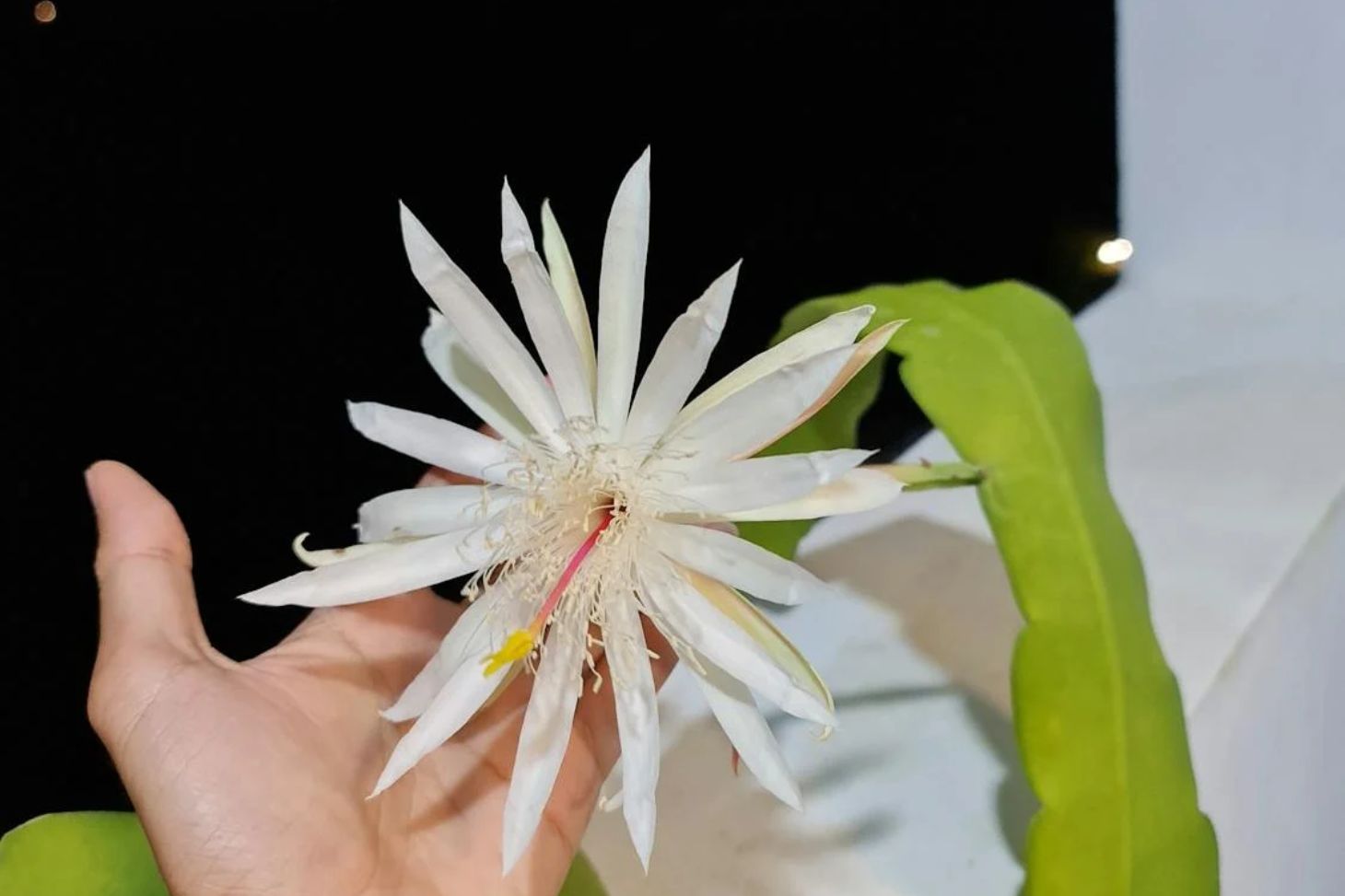Ceroid Cacti
Ceroid cacti (or simply cereus) are a group of cactus plants known for their long, column-like or climbing stems. These striking cacti, sometimes called “cereus,” often grow taller and thinner than other types of cacti. You might see them stretching towards the sky in deserts or draping over rocks in warmer climates.
Some ceroid cacti, like the night-blooming cereus, produce large, beautiful flowers that open only at night and last just a short time. Their unique shapes and blooms make them a favorite for gardeners and cactus fans who want something different.
If you are interested in learning about unusual plants, or you want to add a bold feature to your garden, ceroid cacti can be a great choice.
Understanding Ceroid Cacti

Ceroid cacti make up a large group of cacti known for their long stems and unique growth habits. Many produce spectacular flowers and come in a variety of shapes and sizes. They are common in both collections and wild habitats in the Americas.
Defining Ceroid
The term ceroid describes cacti with tall, elongated, and column-like bodies rather than round or squat forms. You will often see these cacti growing upright, but some may sprawl or climb, especially in tropical regions. Classic examples include the saguaro and organ pipe cacti.
Unlike smaller cacti, ceroid cacti tend to reach impressive heights, sometimes more than 10 meters. Some are tree-like, while others have ribbed, jointed stems. The term is sometimes used broadly, but true ceroid cacti always show this columnar, elongated pattern.
Night-blooming cacti like the “night-blooming cereus” belong to this group. These cacti often flower at night and their large blooms last for only a short time. You may also notice that many ceroid species have reduced spines, especially those adapted to climbing or sprawling.
Distinctive Characteristics

Ceroid cacti stand out due to a few distinctive features:
- Growth Habit: Most grow as upright columns or tall spires, though climbing species exist.
- Flowers: Many species have large, striking flowers, often white and nocturnal, like the night-blooming cereus.
- Spines: Spine characteristics can vary, with some ceroids almost spineless.
Many ceroid cacti are adapted to very dry environments and store large amounts of water in their stems. Species such as the saguaro (Carnegiea gigantea) and organ pipe (Stenocereus thurberi) can live for decades or even centuries.
Climbing and sprawling ceroid types, like Hylocereus undatus (dragon fruit), are cultivated for their fruit and flowers. These cacti use aerial roots or special hooks to attach to other surfaces as they grow upward.
Taxonomy and Classification

Ceroid cacti belong mainly to the family Cactaceae, within which they are spread out over several genera. Well-known genera include Cereus, Carnegiea, Stenocereus, Hylocereus, and Pachycereus. Botanists group them based on stem shape, growth habit, bloom type, and fruit characteristics.
Below is a table showing some common ceroid genera and examples:
| Genus | Notable Species | Growth Form |
|---|---|---|
| Cereus | C. peruvianus | Tall, columnar |
| Carnegiea | C. gigantea (Saguaro) | Tall, branching |
| Stenocereus | S. thurberi (Organ pipe) | Multi-stemmed |
| Hylocereus | H. undatus (Dragon fruit) | Climbing, sprawling |
The name “cereus” refers to a genus of cacti but is also commonly used to describe various ceroid cacti, which include multiple genera with elongated bodies. Classification can be complex, and scientific names sometimes change with new research. When you explore ceroid cacti, expect to find variety in forms, names, and ecological niches.
Habitat and Cultivation

Ceroid cacti are columnar plants commonly seen in deserts and warm climates. They have special needs for sun, soil, and water that help them survive and grow.
Natural Distribution
Ceroid cacti grow mainly in South America, especially in countries like Brazil, Argentina, and Bolivia. Some species are also found in Central America and tropical Asia.
They prefer dry regions with little rainfall and lots of sun. In the United States, you can find them growing outdoors in warm places, such as USDA hardiness zones 10 and above.
These cacti are well-adapted to arid habitats. Their thick, ridged stems store water, which helps them survive during long dry periods. They usually grow in sandy or rocky soils that drain water fast.
Optimal Growing Conditions
To keep ceroid cacti healthy, it is important to give them plenty of sunlight. They do best in direct sun for at least six hours a day.
Use well-draining soil that is mostly sand or a cactus potting mix. Good drainage stops roots from sitting in wet soil, which can cause rotting.
Keep temperatures above 50°F (10°C). Ceroid cacti do not tolerate frost and need warm, dry air. Water them sparingly. Let the soil dry fully between waterings. Too much water is the main cause of problems for these plants.
Key points for success:
- Full sunlight
- Sandy or cactus soil
- Warm temperatures
- Infrequent watering
Common Cultivation Challenges
Ceroid cacti can face rot if overwatered. The roots and stems may turn soft and black if left in wet soil.
Pests like mealybugs or spider mites sometimes attack. You should check your plants for small insects and remove them if you see any.
Cold temperatures are another problem. These cacti need to be brought indoors or protected when it gets cold. Poor air circulation and high humidity can cause fungal growth, so keep your plants in a well-ventilated area.
Blooming and Visual Appeal

Ceroid cacti are known for unique blooming habits that attract a lot of attention from plant lovers. Their flowers often open at night, create large displays, and are sometimes called “blooming cereus” for this reason. Some species only bloom for a single night, making them both rare and special.
Blooming Cereus Phenomenon
The “blooming cereus” refers to a group of ceroid cacti that produce dramatic flowers, often during specific seasons like midsummer to early fall. These cacti typically bloom at night and the blossoms can be quite large, sometimes reaching the size of a small plate.
Blooms are known for their strong, sweet fragrances, which help attract pollinators, such as moths and bats. When these flowers appear, the event is short-lived. Most species’ flowers wilt or close by sunrise.
Many people find the blooming process fascinating because because each flower typically lasts only one night. If you want to see it, you need to be ready to watch at the right time.
Night-Blooming Cereus

Night-blooming cereus describes several ceroid cacti that open their flowers only after sunset. The blooms are often white, though some species have shades of pink or yellow. These flowers create a striking visual against the green stems in the darkness.
One highlight is the size. Some flowers can measure up to 8-12 inches across. Their appearance at night is a defense against daytime heat and helps them avoid certain pests. Scents from these flowers can sometimes fill entire gardens.
In popular culture and gardening forums, night-blooming cereus is considered a rare beauty. The anticipation of their fleeting blooms adds to the plant’s allure.
Notable Species and Varieties
A few well-known types of night-blooming cereus include Selenicereus grandiflorus, often called the “Queen of the Night,” and Epiphyllum oxypetalum, known for stunning, fragrant blossoms.
Some ceroid cacti, like those in the Cereus genus, display ribbed stems and large areoles from which flowers emerge. Each type has differences in bloom size, color, and the number of times it flowers within a season.
Varieties may range in difficulty to care for, bloom timing, and suitability for different climates. If you grow them, pay attention to their specific light, temperature, and watering needs for best results.
Frequently Asked Questions

Taking care of ceroid cacti means paying attention to water, light, and temperature. Knowing when they bloom, which types you might find, and their safety around pets can help you grow these plants with confidence.
How should I care for my ceroid cacti to ensure optimal growth?
Water your ceroid cacti only after the soil has dried out completely. Too much water is a common problem and can lead to root rot.
Place your cactus in full sun or bright light, ensuring they receive about 6-8 hours of sunlight per day. If growing outdoors, some varieties do best with partial shade during hot afternoons.
Fertilize in spring and summer using a cactus-specific or balanced fertilizer. Avoid feeding in fall and winter. Repot only when the cactus outgrows its container.
When do ceroid cacti typically bloom and what are their flower characteristics?
Ceroid cacti usually bloom in the warmest months of the year.
Their flowers are often large, white, and funnel-shaped and may open at night. Some types produce just a few blooms each season, while healthy plants can produce more.
Blooming can be brief, sometimes only for a single night.
Can ceroid cacti be harmful to dogs if ingested?
Ceroid cacti are not considered highly toxic to dogs.
However, the spines can cause injury if chewed or swallowed, leading to mouth pain or other problems. It’s best to keep cacti out of reach of pets to avoid accidents.
What is the night blooming cereus, and how is it related to ceroid cacti?
The night blooming cereus is a common name for several cactus species, including those in the Cereus genus.
These cacti are known for their large, fragrant flowers that open at night, often lasting only a few hours.
The night blooming cereus is a type of ceroid cactus, sharing the columnar shape and care needs.
What are some common types of columnar cacti and their scientific names?
Some well-known columnar cacti in the ceroid group include Cereus peruvianus (Peruvian apple cactus), Cereus hildmannianus, and Cereus repandus.
Others are Stenocereus thurberi (organ pipe cactus) and Pachycereus pringlei (cardón cactus).
These cacti are recognized for their tall, upright growth.
How can I protect my ceroid cacti from freezing temperatures?
If you live in an area where winter temperatures drop below freezing, bring your ceroid cacti indoors before the first frost.
Keep them in a cool, bright room away from drafts. If keeping them outside, use frost cloths or covers for extra protection during cold nights. Move them back outside when temperatures warm up in spring.

